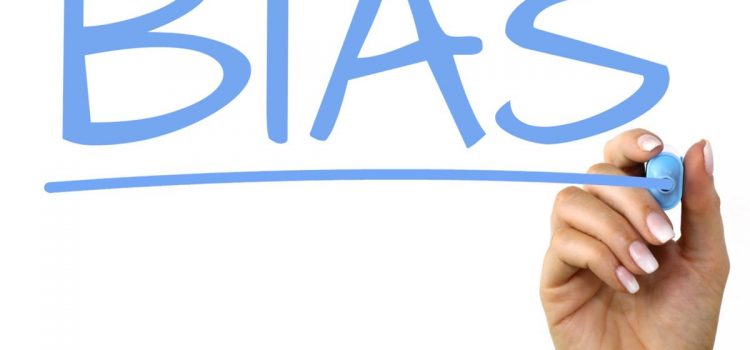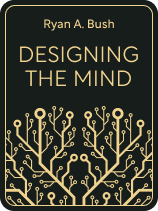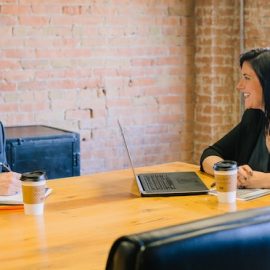

This article is an excerpt from the Shortform book guide to "Designing the Mind" by Designing the Mind and Ryan A Bush. Shortform has the world's best summaries and analyses of books you should be reading.
Like this article? Sign up for a free trial here.
What exactly are cognitive biases? How do biases hijack your reality and prevent you from thinking clearly?
Cognitive biases are snap judgments we make about ourselves, others, and the world around us that are often based on false premises. As a result of biased thinking, we make all kinds of bad decisions and develop a distorted perception of our reality.
Keep reading to learn about the psychology of cognitive biases, why they exist, and how they distort your thinking processes.
The Problem With Biases and False Beliefs
In basic terms, a biased thinking process looks like this: We receive some type of input, and instead of this prompting an accurate thought pattern, our thoughts in response to the input are distorted by a bias. The distorted thought pattern then leads to false beliefs and unfavorable actions based on those false beliefs. False beliefs can be highly problematic, especially when we have a lot of them that link together into a belief system that distorts our entire worldview.
For example, racial biases—assumptions about groups of people based on their race or ethnicity—lead to discriminatory behavior and inequalities. These faulty thought patterns shape people’s views of how others should be treated. The patterns allow people to justify harmful actions and inequities they would otherwise condemn because they believe the racial group they’re biased against somehow deserves the poor treatment.
(Shortform note: Bush primarily frames cognitive biases as detrimental since they introduce inaccurate beliefs and assumptions that distort people’s entire worldviews. However, some people argue that biases are neither wholly good nor wholly bad: In the right circumstances, they can be helpful. For example, having a bias toward favoring the medical advice of doctors over advice from people with no medical training can keep you safe and save you time researching treatments. Then, if someone like a celebrity or other public figure uses their influence to promote false and potentially dangerous medical information, you’ll be inclined to listen to licensed medical professionals instead.)
Why Do Biases Exist?
In psychology, cognitive biases are seen as shortcuts that help us conserve energy. Our brains are confronted with a constant flow of information and choices, and it would be overwhelming and fatiguing to thoroughly process them all. Biases save us energy by prompting snap judgments about people, places, and things—even if they’re often inaccurate. These faulty assumptions are then integrated into our belief systems and thought patterns, leading us to rely on the same incorrect biases again and again.
| Information Overload in the Digital Age Neuroscience research supports Bush’s idea that our brains can only handle a limited amount of information at a time. When we’re presented with too much information in a short period, we experience overwhelm and decision fatigue. This has become more prevalent in the digital age, when unprecedented access to technology has substantially increased our risk of information overload. Confronted with the continuous stream of information from our smartphones and computers, our brains are in a perpetual state of distraction and multitasking. This overwhelm has significant physiological consequences: Multitasking leads to increases in adrenaline, a hormone associated with the fight-or-flight response, and cortisol, a hormone associated with stress. Additionally, the brain becomes overstimulated, entering a depleted state. The overwhelm also results in poor decision-making based on thought patterns that don’t serve us. Since we make countless inconsequential, small decisions throughout the day based on the information we encounter, we have less energy to make more important decisions. Thus, we rely more on mental shortcuts like biases to assess situations and lighten our cognitive load. |
Bias Example: Availability Bias and the Fear of Flying
Bush touches on many different cognitive biases, including availability bias. While under the influence of availability bias, our brains rely on the most immediate or prominent examples—rather than the best, most accurate examples—when making assessments and decisions.
For example, the fear of flying (and, more specifically, the fear of being in a plane crash) can be traced to availability bias. We see coverage of plane crashes in the news and on social media that uses images and personal stories to provoke an emotional response in us. Emotions create strong associations in the brain, so going forward, when we think of flying, we think of these tragedies. Using these examples, we make the assessment that flying is dangerous and will likely lead to a crash. In truth, we’re statistically very unlikely to experience a plane crash. However, our brains don’t develop as strong of an attachment to data, so stories of crashes are more readily available in our minds. Thus, we develop an irrational fear of flying.
(Shortform note: We commonly use availability bias as a cognitive shortcut to make quick decisions, but what determines how well we remember different pieces of information (and thus, which information we rely on when using this bias)? For one, we recall events we witnessed ourselves better than information we heard secondhand. Additionally, we remember novel incidents like plane crashes better than common occurrences like uneventful flights.)

———End of Preview———
Like what you just read? Read the rest of the world's best book summary and analysis of Designing the Mind and Ryan A Bush's "Designing the Mind" at Shortform.
Here's what you'll find in our full Designing the Mind summary:
- How the mind can be reprogrammed like a computer
- Strategies to help you change negative thought patterns, emotions, and behaviors
- How to eliminate your biases to perceive reality more accurately






